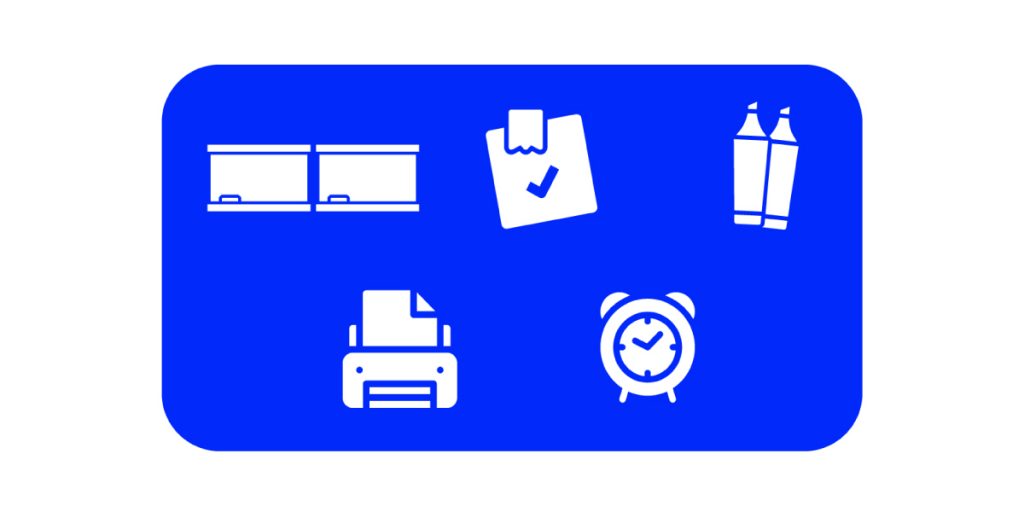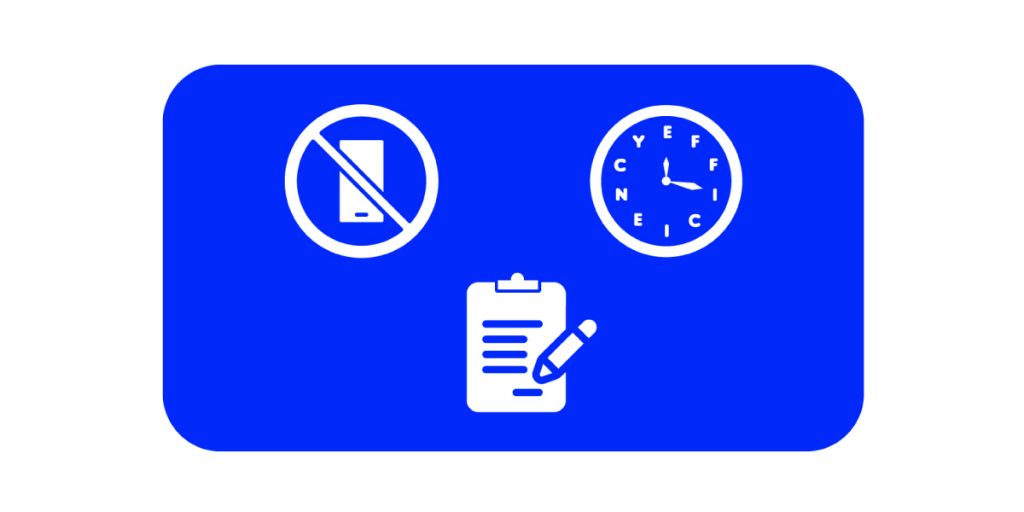They say that a good beginning is half work done. But what is essential to make the beginnings good?
Preparation, don’t you agree?
Design sprint process demands your utmost concentration. Getting distracted in the middle comes at the cost of the process’s effectiveness. Assembling everything beforehand is the savior you need. Also, preparation, here, denotes not just keeping the physical requirements ready. It’s also about mental readiness as well. Being aware of what to expect gives you focus. That’s how you can pull the most of the design sprint.
Now, think of the huge impact the design sprint is gonna have upon your business idea. Isn’t it unfair to approach the process with preparation? So, you need to know how to prepare and this article will be your guide.
Let’s begin.
Who can benefit from Design Sprints?
Design Sprint is a versatile tool that can be used for a variety of problems. It also acts as a validator: completing a sprint brings concrete results that inform whether an idea should be acted upon.
Thus, anyone at the crossroads of making an important decision can utilize a design sprint, including:
- A first-time entrepreneur who has a strong product-vision, but is new to the scene and needs guidance.
- A CEO who wants to make sure that their idea has an actual demand in the market.
- A Product Manager who is doubtful if the current version of the product would be well-received.
- A Marketer who could better frame the brand’s tone and messaging once they observe how users already perceive the brand/product.
This list does not include all possible candidates, and the problem and the people stated above are interchangeable.
In general, anyone who has a set of tasks to complete can find a good place to start through a design sprint.
A design sprint is not an individual event. This section just shows that this set of people can get the most benefit from this intensive problem-solving approach.
P.S. If you are reading this, then you can become the facilitator of the sprint. (Keep reading to find out what that means. A hint: They are quite important in the design sprint.)
Prerequisites for the Design Sprint
In the beginning, the following is done:
- The to-be sprinting team clears their entire schedule for the week.
- They put down a deadline that marks the sprint’s end.
As in the Sprint book, it all begins with planning the sprint itself. Choosing the right challenge for the sprint, gathering the right team, and finding the right space are the prerequisites. As you’ll see later, there is a lot of writing and drawing involved. So, stocking up the supplies beforehand is necessary as well.
The Right Challenge
Whether you have an interface that needs to be polished or a feature that needs better explanation, knowing the exact challenge you want to tackle in the sprint speeds things up.
Here is an easy way to figure out what those challenges are: Say aloud “I wish I …” and finish the sentence. Chances are, you would immediately stumble upon your roadblock.
For example, “I wish I could see what customers do after they install my app” or “I wish I could find a better way of motivating users to try out new features.”
Write the sentences down and move to the next step.
The Right Team
Every winning recipe has a unique blend of spices. For a successful sprint, you’d have to gather a team that blends well, i.e., the skillset of each person complements the other’s skillset. And you can have no more than seven people on this team.
You might ask, what if there are more people interested in or eligible for the sprint; the answer to this comes soon. Hint: Some of them are given the status of ‘experts’. Fancy that.
There is no one-list-fits-all approach for this.
You could take a few pointers from the classic Google Design Sprint:
- The CEO or founder of the company. Called as ‘the Decider’ in a design sprint, they are the ultimate deciding-authority during the sprint.
- People from diverse backgrounds to bring expertise and concerns on vital functions, such as marketing, engineering, sales, etc.
- The Facilitator. They are the ones who are keenly reading this blog. Example: You. Running a smooth sprint is their responsibility.
The Decider
Being the ultimate decision-making authority in a design sprint, they cut the fat of pointless debates, saving a lot of time. Having them in the sprint is essential because they have spent the most time with the problem and thus, understand it deeply.
This in-depth understanding gives us a good intuition on what the winning set of solutions will look like. It helps them formulate the right criteria that would be used to judge major decisions and guide the sprint forward.
Diverse People
While the founder/product manager is knowledgeable, they never know all the problems. Each function of the product might have some that they have never heard of.
This is why bringing experienced people from different departments of your office is important. The Dev Lead can point out limitations on a certain engineering problem, and the Sales Rep can tell you the common queries that customers have during a call.
The Facilitator
As a string bringing everyone together, the facilitator plays a major role. They make sure that the sprint moves as planned. This means taking notes, encouraging others to do the same, setting a timer during discussions, etc.
The Sprint book emphasizes that everything can run smoothly only when the facilitator is unbiased. This means that they do not participate in any of the idea-generation or prototyping. All of their focus is on making sure that everyone is following the steps of the sprint.
Gather the team
With you as the facilitator, there are six more roles to be filled. One seat goes to the decider, and the rest five go to the set of diverse people.
In complex or bigger projects, there might be more than one decider. But the overall number of seven people is not allowed to increase.
As for the remaining interested/eligible people, they are still valuable. They will become ‘Experts’, and will come on Monday and present their opinions on the planning.
By the time the planning is done and the list of problems is completed on Monday, the design-sprint team would be pretty much invested in the sprint’s process. The Experts would act as pairs of outside eyes, and anything that say will sharpen the overall focus of the rest of the sprint.

The Right Space
You might be tempted to opt-in a meeting room for the design sprint. But meeting rooms are generally small. Considering that the sprint will run for five continuous days, you would need a bigger space. This is because:
- You would have to accommodate seven people
- Some space for at least one whiteboard
- Extra space where individuals can think on their own and come up with solutions
The Sprint book points out that the paraphernalia of other projects would act as distractions for the members in the sprint.
These include other colleagues, project files, and sticky notes. During the design sprint, you would want the team members to be focused only on a single goal — getting through the sprint and achieving its outcomes.
Therefore, a space different from the regular working environment is well-suited for the design sprint.
Supplies for the Design Sprint
A design sprint involves intensive note-taking along with a lot of presentations. Therefore, the standard tools in a classroom will come in handy.
Here are the must-haves:
- At least two whiteboards.
- As you’d come to see, permanent text would be written down on Monday that would guide the rest of the sprint.
- Plus, there would be lots of drawing involved as well. So the more available space for writing and sketching, the better.
- Sticky Notes.
- Lots of reminders and important data that would be shuffled around throughout the sprint.
- Markers for the whiteboard.
- Paper for the printer.
- This will come in handy for generating material for demonstrations.
- Dot stickers, in small and large sizes.
- Timers.
- The central figure in the design sprint; they keep everyone on track.
With these in place, your design sprint is ready to begin.

Why Does The Design Sprint Need To Be Strict?
As you might have sensed by now, the design sprint is quite rigorous. Since the design sprint is a five-day process that takes your idea, converts it into a prototype, and gets it tested, there is no time to be wasted.
Debates, brainstorming sessions, multitasking— these are things that drain time. A sprint is like a highly efficient machine. There are no allowances for things that can slow it down.
Thus, the design sprint comes with its set of rules.
The important rules are:
- No Phones. Except during idea-generation, lunch, and lightning-demos.
- The Decider always makes the final call.
- Time is a scarce resource. It is always monitored, and no one is allowed to waste it.
And these are things that would be constantly observed:
- Making notes— The first three days and the last day of the design sprint would generate a lot of data. Its sheer amount neither can be retained accurately in everyone’s memory, nor can a single person document the entire event. Hence, everyone will constantly make notes, not necessarily detailed, for everything— discussion, ideas, thoughts, etc
- Keeping planning separate from execution— Humans are great at doing one thing at a single time and decent at doing multiple things together. Since this is a short event, it has to be highly productive. To put everyone in their peak productive states, every aspect will happen at its own time.

Only a well-structured day that is managed properly will yield its results properly.
Say, on Monday, if you miss out on bringing in experts, then Tuesday will not be as productive as expected.
Therefore, as the facilitator, you will have to enforce every rule. If someone asks for more time during a discussion or a sketch, remind them that the sprint is fast-paced and cannot stop for anything.
Bottom Line
You have read and understood all the prerequisites.
Take note of all these requirements. Do you know what’s better? Making them into a checklist. This way you can double-check before starting off. Write down the takeaways and recommendations for your mental preparation.
With that, you are all set. It’s now to get into action now. You can begin planning your design sprint. Remember, “A winning effort begins with preparation”. You prepare, you rock; the design sprint process isn’t an exception here.







Add comment